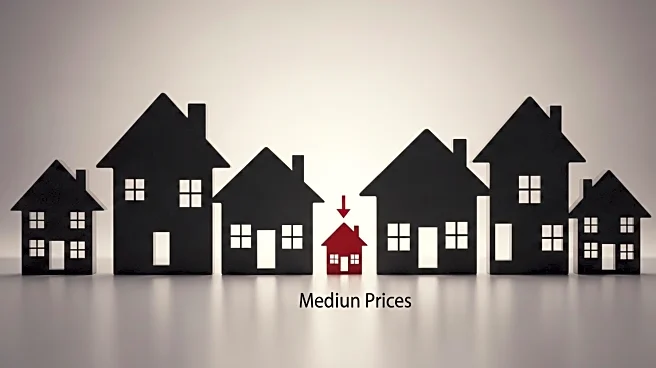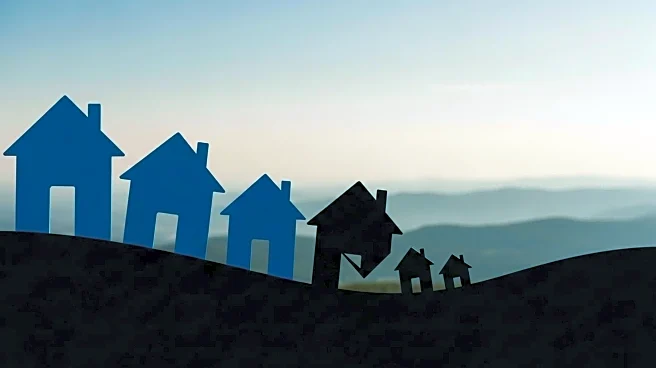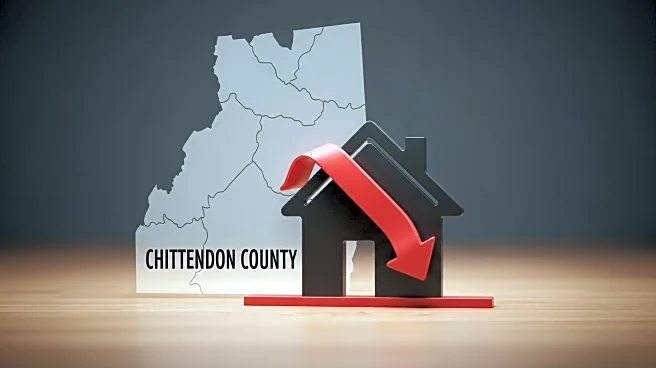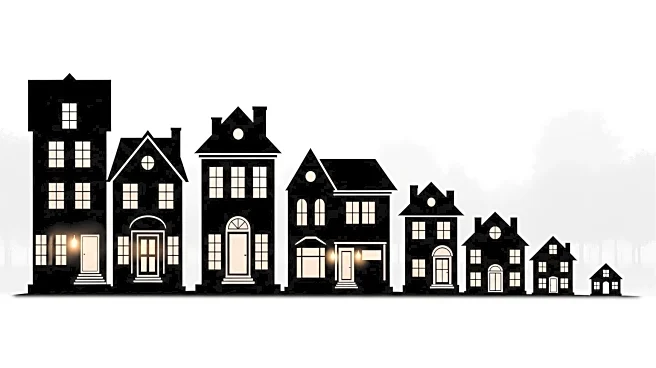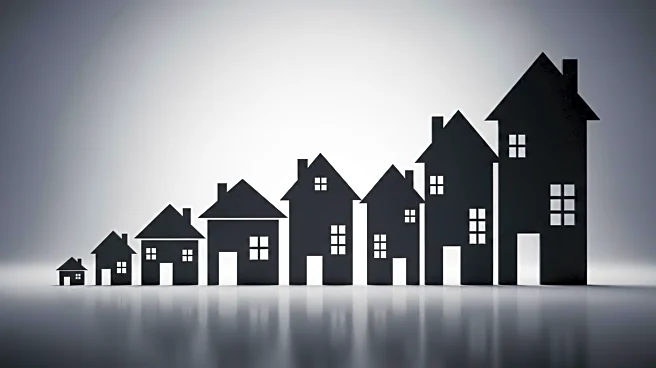What's Happening?
In Gaston County, North Carolina, the median home listing price in August was $330,000, marking a 1.5% decrease from July's $334,950. This decline is part of a broader trend observed across the United States, where the median home price fell slightly to $429,990. The data, sourced from Realtor.com, highlights that Gaston County's median home size was 1,716 square feet, priced at $200 per square foot. Despite the decrease in listing prices, the number of new listings in Gaston County increased by 20.9% compared to August 2024, with 416 homes newly listed. The median time homes spent on the market was 55 days, slightly below the national median of 60 days.
Why It's Important?
The decrease in median home prices in Gaston County reflects a cooling trend in the real estate market, which could have significant implications for buyers and sellers. Lower listing prices may attract more buyers, potentially increasing competition and driving sales. However, for sellers, this trend might mean adjusting expectations and strategies to align with market conditions. The increase in new listings suggests a growing inventory, which could further influence pricing dynamics. This shift in the housing market is crucial for stakeholders, including real estate agents, investors, and local governments, as it impacts economic activity and housing affordability.
What's Next?
As the real estate market continues to evolve, stakeholders in Gaston County may need to adapt to changing conditions. Sellers might consider pricing strategies that reflect current market trends, while buyers could benefit from increased inventory and potentially lower prices. Real estate agents and investors will likely monitor these developments closely to identify opportunities and risks. Additionally, local governments may need to assess the impact of these changes on property tax revenues and housing policies. The broader U.S. housing market trends will also play a role in shaping future expectations and strategies.
Beyond the Headlines
The decrease in home prices and increase in listings in Gaston County may have deeper implications for the community. As housing becomes more affordable, it could lead to demographic shifts, attracting new residents and potentially altering the socio-economic landscape. This trend might also influence urban planning and development strategies, as local authorities seek to balance growth with sustainability. Furthermore, the real estate market's fluctuations could affect related industries, such as construction and home improvement, impacting employment and economic stability in the region.

